[ad_1]
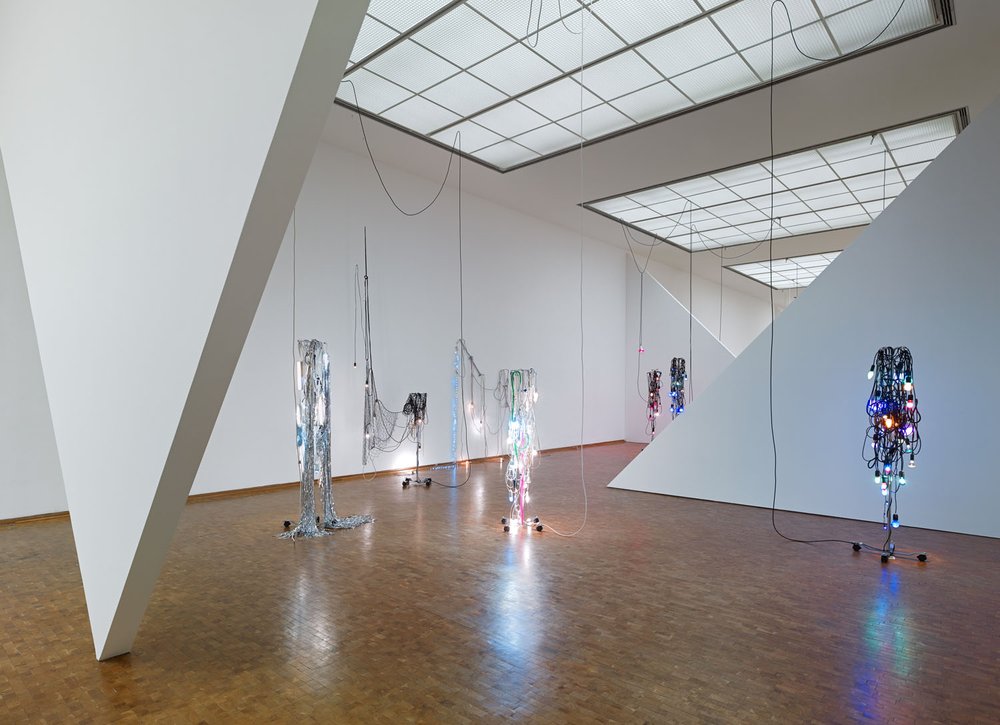
Installation view of “Haegue Yang: ETA 1994–2018, 2018 Wolfgang Hahn Prize,” 2018, at Museum Ludwig, Cologne.
©HAEGUE YANG/SAŠA FUIS, COLOGNE
Haegue Yang’s alluring, sometimes confounding work typically takes the form of elaborate sculptures and installations crafted out of industrial materials, such as fluorescent lights, wiring, wheels, and rods. Venetian blinds are also a curiously recurring element. One of the most critically lauded artists of her generation, Yang, who is 46, is currently the subject of a survey at the Museum Ludwig in Cologne that is the result of her winning its 2018 Wolfgang Hahn Prize. It is not the only notable outing for the South Korean artist this year—in July, her work will appear at the Liverpool Biennial in England—and next year, she will have a retrospective at the Museum of Contemporary Art, Los Angeles. With these shows in mind, reprinted below is Jori Finkel’s profile of Yang, which first appeared in the March 2010 issue of ARTnews. The piece features meditations on her unusual installations, which the artist admits are “strange” and about “losing control somehow.” —Alex Greenberger
“Bringing Storage to the Spotlight”
By Jori Finkel
March 2010
Haegue Yang’s installations reenact the journey of artworks from humble boxes to hallowed walls—and back
Sometimes an artwork assumes a life of its own, changing shape along with changes in ownership, location, or exhibition conditions. That is the case with one of Haegue Yang’s most important and enigmatic works, an installation called Storage Piece.
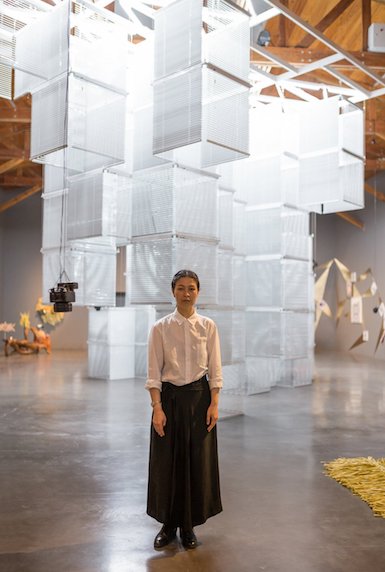
Haegue Yang.
©HAEGUE YANG/ABIGAIL ENZALDO/COURTESY KURIMANZUTTO, MEXICO CITY
The 38-year-old artist came up with the idea for the work in 2004. She had just finished a number of museum and gallery exhibitions, so there was a moment when her geometric collages and paintings—as well as modular shelves, plastic stools, and other household materials—were being shipped back to her. The question was where to store them.
Out of necessity, or at least inconvenience, came an idea: to assemble the crates of art on a bed of four wood pallets and send them to her next exhibition. Storage Piece was first shown later that year, at Lawrence O’Hana Gallery in London. In 2005 Berlin gallerist Barbara Wien brought the work to her booth at the Art Forum Berlin fair, where collector Axel Haubrok bought it, contents unseen. He soon enlisted Yang’s help in opening the boxes for a 2007 show, “Unpacking Storage Piece,” at his private exhibition space in Berlin.
“It was one of the best things that could happen to Storage Piece,” the artist says. “Not just because it’s a radical transformation, but also because there’s a real honesty in this step—it reflects the new owner’s very real desire to see the pieces inside.”
Most recently, the installation made its way to the United States, as Yang’s contribution to “Your Bright Future,” a group show of Korean artists (such as Do Ho Suh and Gimhongsok) organized by the Los Angeles County Museum of Art and the Museum of Fine Arts in Houston, where it closed last month.
In some ways, this particular installation’s history reflects Yang’s own career trajectory, from an artist who could not find a home for her work to one with museum and gallery exhibitions far and wide. Working in video, sculpture, drawing, painting, and, most of all, installation, she is seen as one of the most exciting Korean artists of her generation.
“What she’s doing is fresh and new, and it forces you to see things in a different way. She has a conceptual rigor,” says Christine Starkman, curator of Asian art at the MFA, who organized “Your Bright Future” with then LACMA curator Lynn Zelevansky and independent curator Kim Sunjung. Starkman notes the artist’s intensity and focus. “She is meticulous. You need to be on your toes to work with her,” she says. Though, she adds, “there’s a fragility in her that could make you cry.”
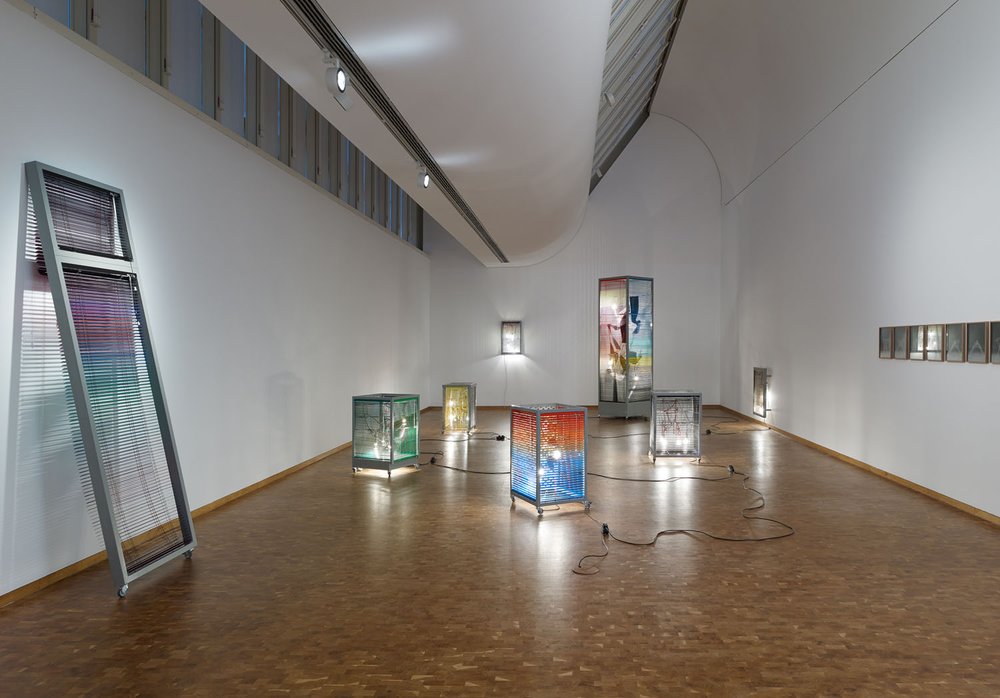
Installation view of “Haegue Yang: ETA 1994–2018, 2018 Wolfgang Hahn Prize,” 2018, at Museum Ludwig, Cologne.
©HAEGUE YANG/SAŠA FUIS, COLOGNE
Yang grew up in Seoul and received her undergraduate art training at the Seoul National University Fine Arts College. “It was a traditional academy education in sculpture—terra-cotta, modeling, all of it,” the artist says. She moved to Frankfurt in 1994 to attend the Städelschule, “which was just the opposite kind of education— very open, hardly any obligatory courses.” She now splits her time between Seoul and Berlin.
Last year was a busy one for the artist. In addition to “Your Bright Future,” she had a residency at the Walker Art Center in Minneapolis in conjunction with a survey of her work titled “Integrity of the Insider,” which closed at the end of last month. She also represented Korea at the Venice Biennale. At one time she resisted national categories, but “now I’m acknowledging them to try to achieve something beyond that,” Yang says.
This year Yang will have a retrospective at the Artsonje Center in Seoul. The show, up from August 20 through October 31, will include what she calls a “major” new commission. Yang will also have a solo show at her Berlin gallery, Barbara Wien, where prices for her work range from $2,600, for small photographs, to $130,000, for large-scale installations with several components. She will be in numerous group shows this year, including one at Hayward Gallery in London, opening in June.
Yang’s first solo museum exhibition in the United States was at REDCAT in Los Angeles in 2008. Her sensuous installation Asymmetric Inequality incorporated wind, heat, light, and sound—generated by electric fans, heaters, Venetian blinds, mirrors, and moving theatrical lights. Viewers were invited to play a drum set that triggered the lights. “The idea is that you are asked to deal with contradictory sensations: disturbing, pleasing, nostalgic,” Yang says. For her, these sensations evoke the tropical experience of colonial Indochina, where novelist and filmmaker Marguerite Duras spent her childhood. Duras is a continuing source of fascination for the artist, who last month organized a screening series of Duras’s films at the Walker.
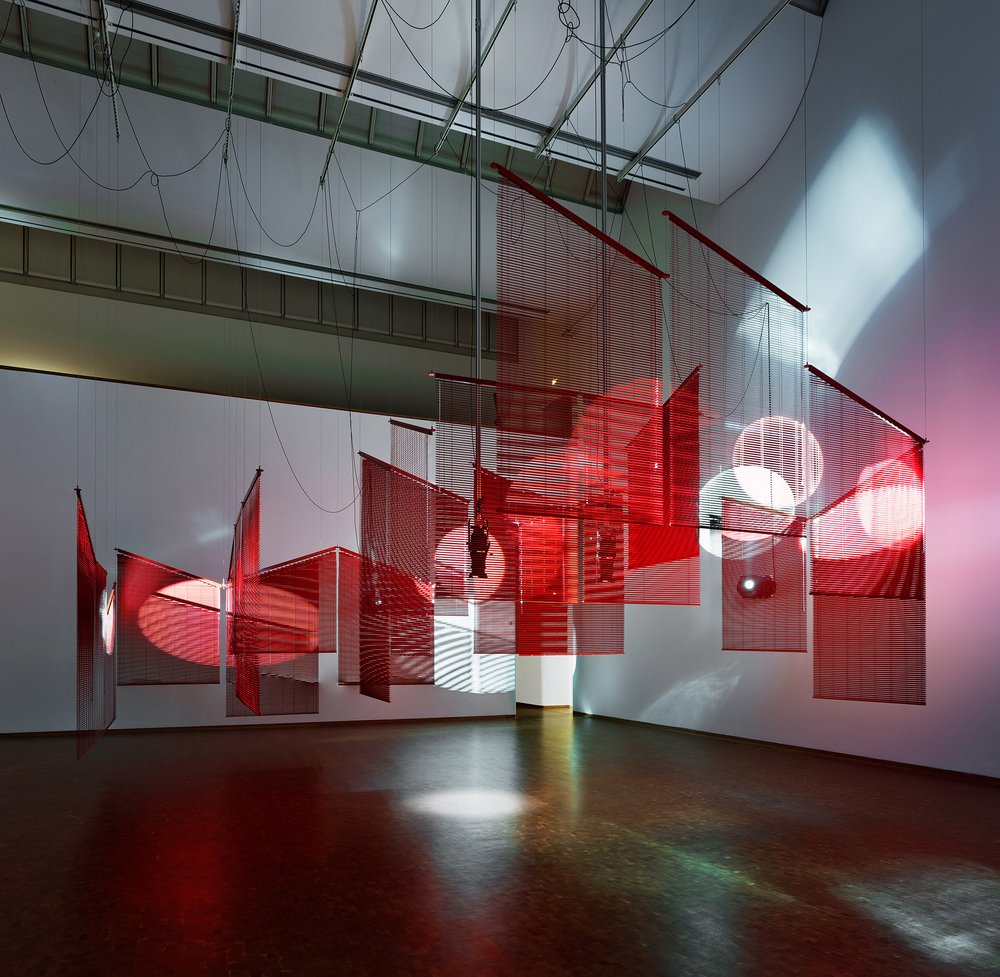
Haegue Yang, Mountains of Encounter, 2008.
©HAEGUE YANG/MUSEUM LUDWIG, COLOGNE/SAŠA FUIS, COLOGNE
For the Venice Biennale, Yang—the first female artist to show in the Korean Pavilion—created the exhibition “Condensation,” composed of three works (all 2009) exploring the relationship between identity and space. A video essay, Doubles and Halves—Events with Nameless Neighbors, juxtaposes footage of a neighborhood in Seoul where the artist once lived with shots of the biennale grounds abandoned in the off-season. Sallim (a rough translation from the Korean is “Running a Household”) abstractly re-creates Yang’s kitchen in Berlin, with pots and pans and the fragrance of curry and apple pie, issued by scent emitters. Series of Vulnerable Arrangements—Voice and Wind uses electric fans, scent emitters, and Venetian blinds to create a disorienting multisensory experience.
Yang is intrigued by blinds for their “potential to create a floating geometry” and for their half-transparency, “which allows your gaze and also smells, the heat, and the wind to go through them,” she says. Zelevansky, now director of the Carnegie Museum of Art in Pittsburgh, says the blinds “appear in her work a lot as a symbol of the intersection between private and public. They’re very personal, but intellectual too.”
The Venice installation differed from others in that Yang decided to work with natural instead of artificial light. “The Korean building is more or less a glass pavilion, and I didn’t want to block out all those windows,” she says, describing an architectural feature that makes the pavilion notoriously difficult for artists. “I decided instead to open the piece up to changing with weather and time—it’s about losing control somehow.”
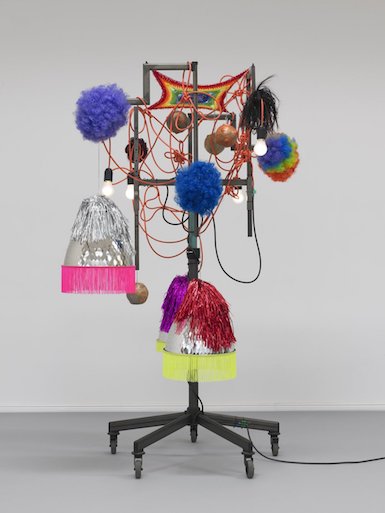
Haegue Yang, Medicine Man – Indiscreet Other World, 2010.
©HAEGUE YANG/NICK ASH/ZABLUDOWICZ COLLECTION, LONDON
Eungie Joo, the commissioner of the Korean Pavilion, who is director and curator of public programs at the New Museum in New York, says that Yang showed respect for the building’s architecture in other ways. “The original, historic Korean building was the toilet of the Giardini, and then they built this postmodern building attached to it. Most artists over the years have built a lot of walls to hide or smooth the transition between them,” says Joo. “But Yang found a way to let the building have its own dignity.”
Sensitivity to the physical origins or surroundings of a piece runs throughout her work—for Yang an artwork is almost always in dialogue with its site. At the LACMA installation of Storage Piece, Yang used 42 pallets instead of 4, incorporating additional crates to command a 1,000-square-foot gallery. The exhibition opened with the work in its packed form, but Yang directed museum staff to gradually unpack the crates. There were also performances on the pallets, which were recorded and added as an audio component to the piece.
For the show’s run at the Museum of Fine Arts in Houston, Yang had a smaller exhibition space, so she changed course, making the work “quiet again,” she says. Storage Piece was displayed only in its packed form, with the addition of a runway to suggest the potential for unpacking.
Storage Piece is now back with Haubrok. “It’s strange,” Yang says. “This piece has been completely consuming. I felt very relieved to give up the piece when it was initially sold. But somehow my understanding of it never ends.”
[ad_2]
Source link

